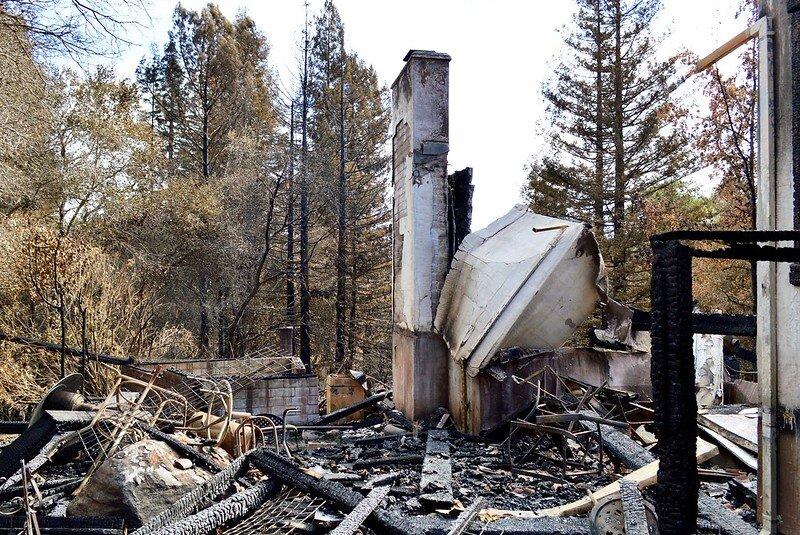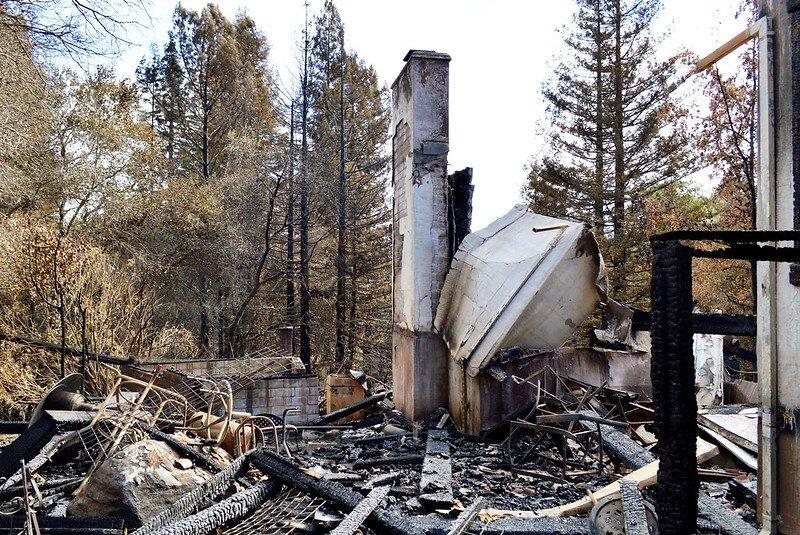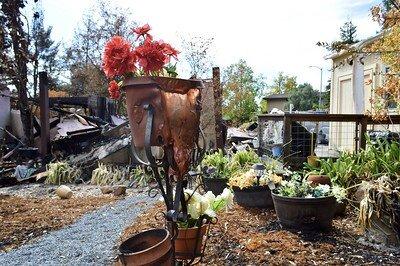Overall, four million acres have burned during this fire season in California, and the number of acres is still growing. Despite the sheer physical magnitude that this statistic presents, this fire season will scar more than its burnline. From carbon monoxide poisonings, tainted water supplies, and the sheer emotional trauma, the Glass Fire pressed Sonoma and Napa County residents to their breaking points.
Over the past years, Sonoma and Napa Counties have dealt with great emotional pain and trauma from fire season. Many historic and treasured structures, wineries, and family homes have been incinerated by the fires.
“Every drop of wine was like a miracle this year, the viticulture was so hard,” said Jean-Baptise Rivail, general manager of Newton Vineyard, in a New York Times interview. “It’s almost like losing a living thing. And it’s violent, to go back on site to find ashes and gutters full of wine.”
In light of the Glass Fire, 16 firefighters were tested for carbon monoxide poisoning, with one being transported to a hospital in Santa Rosa. The other 15 were released from testing.
Scott McLean, a spokesman for CAL FIRE, told the Los Angeles Times that the poisoning occurred at the base camp, near the Sonoma County Fairgrounds. McLean did not provide other details, but he said, “…time will tell” for the lone hospitalized firefighter.
Along with firefighters’ lungs being poisoned, water supplies were also tainted by the fire debris. According to an article by CalMatters, drinking water has been contaminated throughout the years, most recently with the Glass Fire and CZU Lightning Complex. The concern is greater for rural neighborhoods and homes, like ones located in Sonoma and Napa Counties.
Kody Petrini, of Napa County, is one of the many citizens dealing with water contamination. In an interview with CalMatters, Petrini says, “If the water is messed up, we understand. We had a catastrophic fire up here, we understand that. But just let us know why.”
The cost of water contamination affects communities economically and environmentally in the long term. CalMatters states the cost of fixing the damage to water systems could be up to $150 million in some areas. In addition, scientists and public officials must work quickly before the rain season starts. Newsha Ajami, director of Urban Water Policy at Stanford University, warns, “Every drop of water in a watershed…is moving towards that outlet, and if they’re not cleaned up, all those pollutants and contaminants and toxins can end up in our water system.”
With a race against time and nature, scientists and officials are worried of possible algal blooms from the organic debris. Even though chemical cleaners prove effective in water treatment, they are often carcinogenic and cause other health issues.
Even after containment, it is often difficult for planners and developers to circumnavigate the prior issues. In the CalMatters article, California Director of Clean Water Action Jennifer Clary said, “It’s virtually impossible to build a potable water system that can also fight megafires.” In addition, Napa County Engineering Manager Christopher Silke notes, “Rural residential community public water systems were never designed with the intent to provide a line of wildfire defense to save structures.”
As of Oct. 10, according to CAL FIRE, the Glass Fire has burned 67,484 acres, and it is 82% contained. The cause is still unknown. Like McLean said, “time will tell” how the fire season will end and whether survivors will remain resilient until next year.





![[Both photos courtesy of sonoma.edu]
Ming-Ting Mike Lee stepped in as the new SSU president following Sakakis resignation in July 2022](https://sonomastatestar.com/wp-content/uploads/2024/04/CC4520AB-22A7-41B2-9F6F-2A2D5F76A28C-1200x1200.jpeg)




























